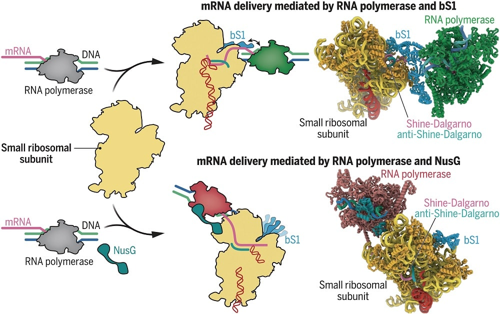For the first time, researchers captured images of ribosomes attaching to RNA.
Ribosomes are cellular organelles that play a crucial role in protein synthesis. Recent studies have shown that they can "hide" cancer cells from the immune system and may influence bacterial resistance to antibiotics.
Experts from several universities in France, Germany, and the USA have captured for the first time how ribosomes integrate into mRNA within cells to subsequently form proteins. The description of the process and its analysis was published in the scientific journal Science.
The researchers found that the enzyme RNA polymerase, which transcribes mRNA (transfers information from DNA to mRNA — Ed. note), anchors two "anchors" in the ribosome, creating conditions for the initiation of protein synthesis. According to the scientists, this is similar to a foreman at a construction site checking in two ways whether the workers have securely fastened all significant components and whether the structure is safe.

For the analysis, the researchers developed a mechanistic structure with a diameter of 10 billionths of a meter using cryo-electron microscopy. This model successfully demonstrated how different components of the complex work together, delivering freshly transcribed mRNA to the ribosome and acting as a link between transcription and translation, which is the synthesis of proteins from amino acids based on the mRNA template.
“Understanding how the ribosome captures mRNA is a necessary condition for navigating subsequent processes, such as interpreting the information encoded in mRNA. <…> It’s like a book. Your task is to read and interpret the book, but you don’t know where to find it. How is the book delivered to the reader?” — explained the authors of the study.
According to the scientists, the results of their work may allow for the development of new antibiotics that target specific pathways of protein synthesis in bacteria. Typically, antibiotics affect ribosomes or RNA polymerase, but bacteria manage to evolve or mutate, becoming resistant to the drug. The new knowledge is likely to enable scientists to "outsmart" bacteria and deprive them of the ability to reproduce.